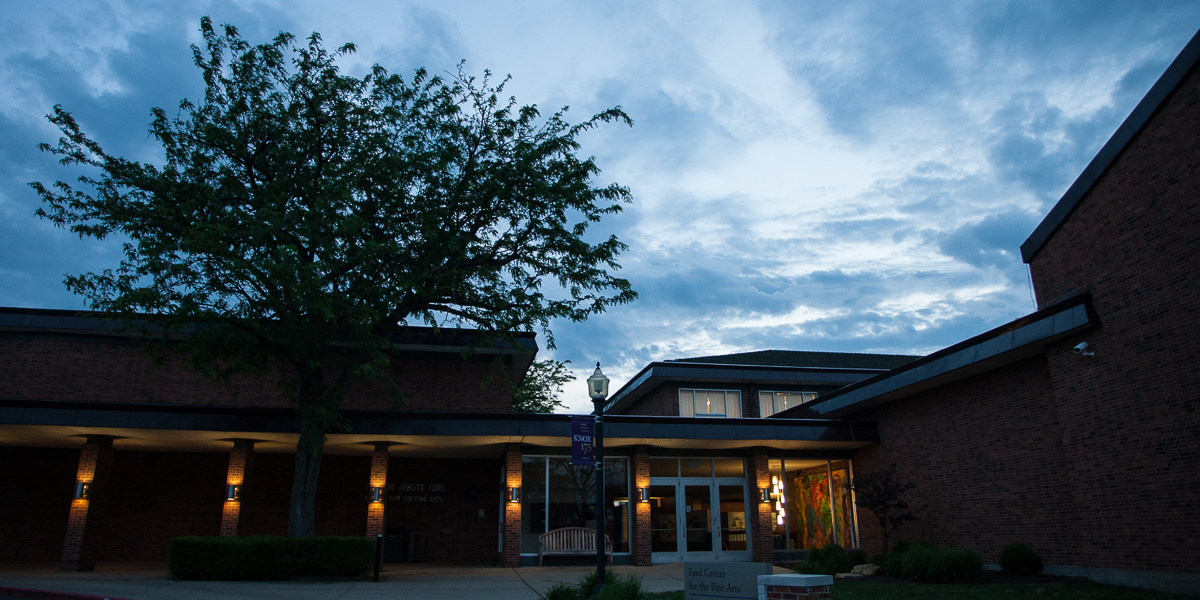

Venture Boldly

Explore other offices & services
Career Success, Bastian Family Center for
College Engagement, Office of Advancement
Community Service, Mark & Jeannette Kleine Center for
Disability Support Services, Office of
Global Studies, Eleanor Stellyes Center for
Government & Community Relations, Office of
Immigration & International Travel Communications
Information Technology Services
Institutional Research, Office of
International Student Services, Office of
Knox Advisory Committee on Socially Responsible Investing
Research & Advanced Study, Gerald & Carol Vovis Center for
Student Development, Division of
Student Financial Services, Office of
Clarissa Kampe
Director of International Student Services
2 E. South Street
Galesburg, IL 61401

In the U.S., banks offer customers two types of bank accounts—checking or savings. A checking account allows you to store your money safely in a bank while having easy access to your money. You can take money out of your checking account at any time by using your debit card or a check. A savings account allows you to store money that you don't intend to use for a long time and earn interest off your money. Many banks require you to keep money in a savings account for six months or a year to earn the full interest. As a student, you'll want to open a checking account so that you can access and receive your money easily.
With a checking account, you can access your money without issues. You'll receive a debit card, or check card, in the mail several business days after you open a checking account. You can use the debit card at an ATM to withdraw cash. You can also use a debit card to pay stores, restaurants, and other service providers, and your payment will be deducted from your checking account. After opening an account, you'll also receive checks, which you can use to specify the amount of money to be paid and the recipient. As soon as you write the check, the recipient can use the check ("cash" the check) and either receive cash, or deposit the money into his/her bank account. Bills in the U.S. are often paid by check. Additionally, you can walk into your bank and ask the clerk to withdraw money from your account. You'll need to show some form of ID to do so. F&M Bank Bank has a convenient ATM located on the first floor in Seymour Union. The ATM allows you to deposit funds and make cash withdrawals if you have a PNC account.
Once you open a bank account in the U.S., you'll be able to start receiving money. Most major banks in the U.S. allow customers to receive international wire transfers. If your family plans to wire money to you, check your bank's website for instructions or talk with the banker who helps you open your account. You will also be able to receive payment by direct deposit. Direct deposit is a payment system in which you provide your employer with your bank account and routing number, and your employer sends your payment directly to your bank account. You can find your bank account and routing numbers at the bottom of your checks. All student jobs on campus are paid by direct deposit.
Most Americans don't carry a lot of cash—instead, Americans tend to use debit cards, credit cards, or checks when they're out shopping or eating. If possible, we recommend bringing a small amount of cash and using a credit card, debit card, or traveler's checks for any immediate expenses you have. You'll be able to open a bank account during the orientation program for new international students, but please keep in mind that it could take several business days for a wire transfer to reach you, if your family plans to send one.
It's very important to consider how much money you should be able access within the first few weeks of school. You may need some money to purchase train tickets, food, or other items during your travel, depending on how you come to campus. Additionally, how much money you need right away will depend on what you anticipate purchasing. You'll likely need to purchase a cell phone and some things for your dorm room. In addition to the cost of service for a cell phone, new phones range in price—you can likely find a basic phone for around $50-$100, and new smartphones range from $500 to over $1,000. You should also allow $300 - $400 for books for your first term. Once you've purchased a phone (if necessary), supplies for your dorm room, and your books, you won't need much spending money—there are always a lot of fun events happening on campus, which are all open and free to students.